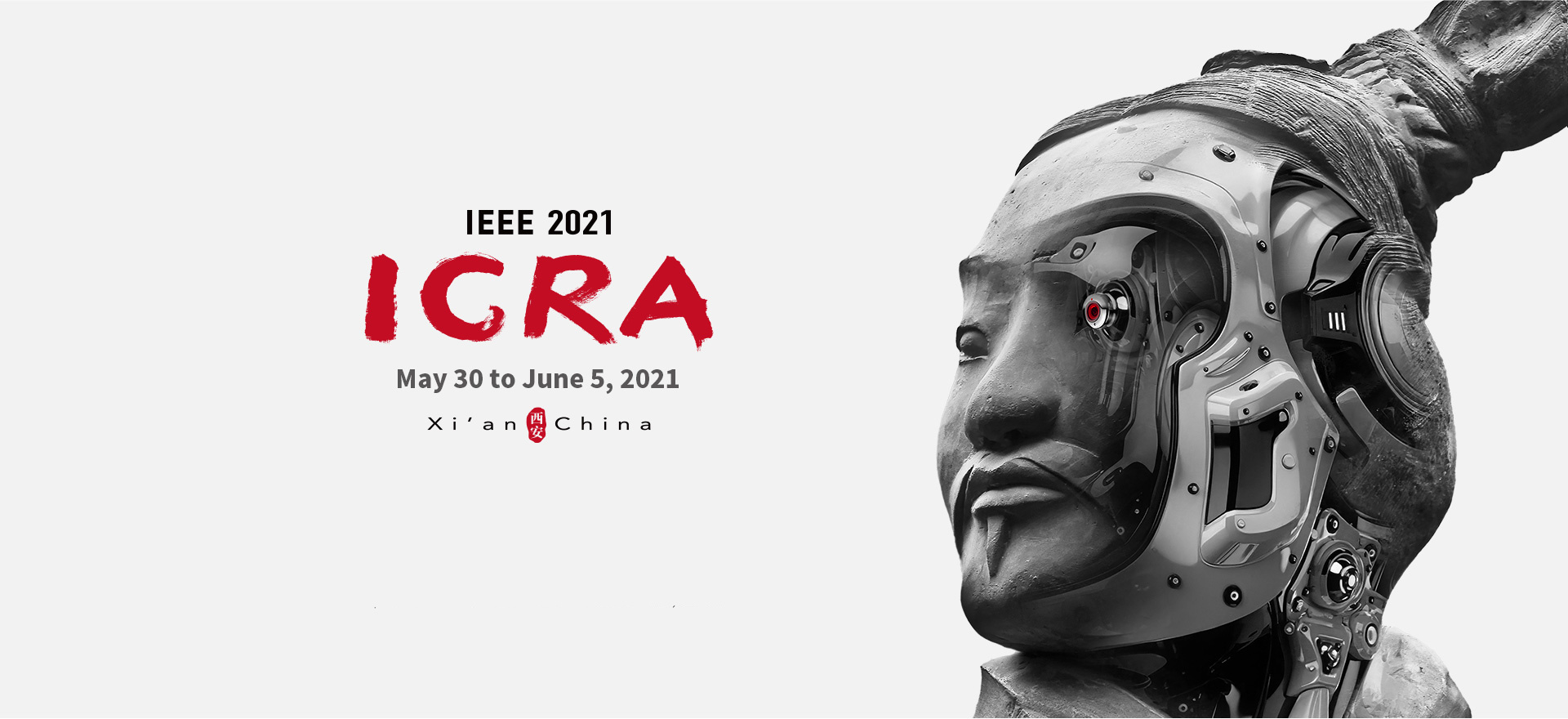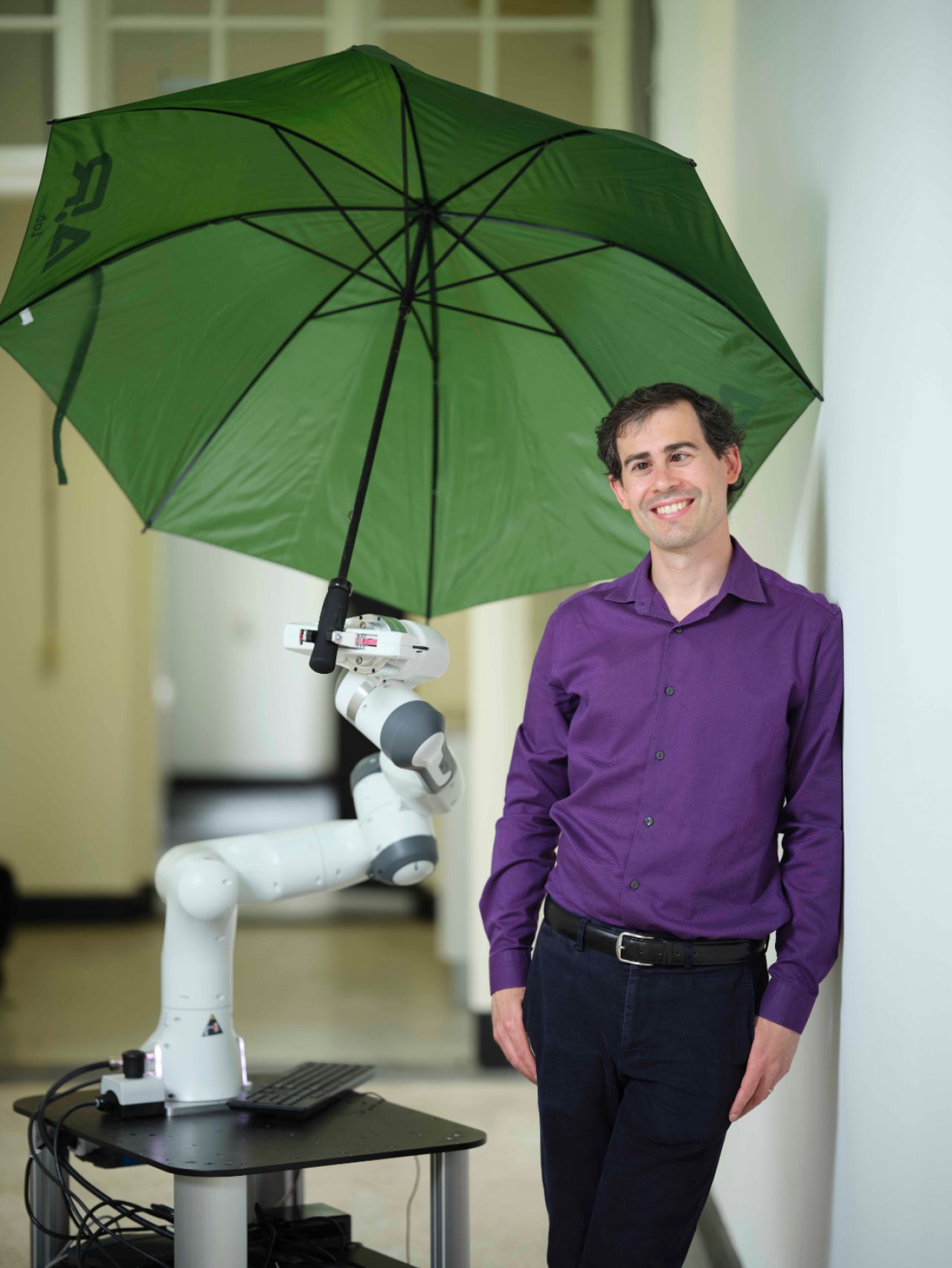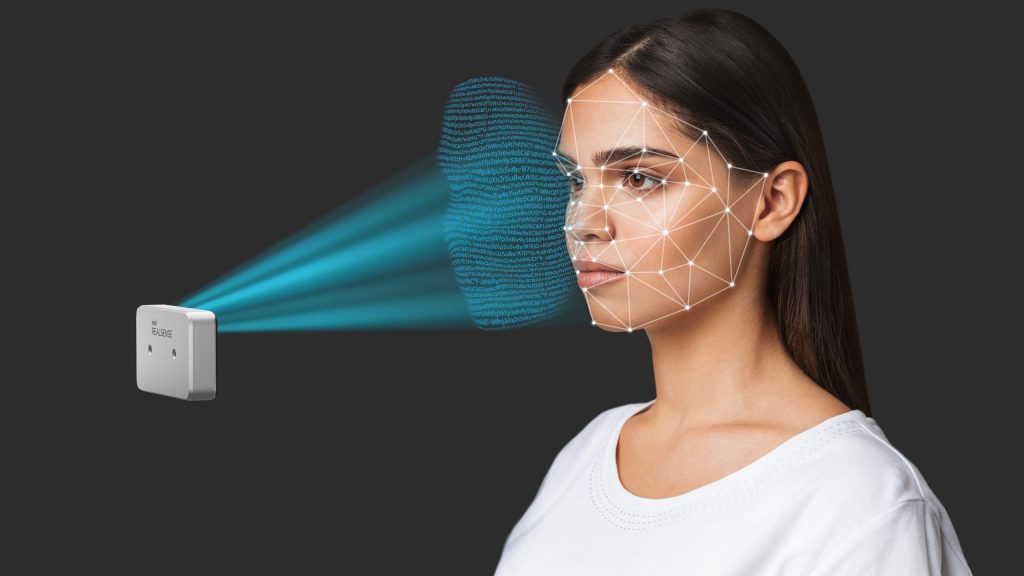Subterranean investigations: Researchers explore the shallow underground world with a burrowing soft robot
Electrohydraulic arachno-bot offers light weight robotic articulation
6 Cool Servo Drive Features You Might Not Know About
Robotic ship sets off to retrace the Mayflower’s journey
Highly maneuverable miniature robots controlled by magnetic fields
Four Ways to Improve Your Logistics Applications
IEEE ICRA 2021 Awards (with videos and papers)

Did you have the chance to attend the 2021 International Conference on Robotics and Automation (ICRA 2021)? Here we bring you the papers that received an award this year in case you missed them. Congratulations to all the winners and finalists!
Best Paper Award in Automation
Automated Fabrication of the High-Fidelity Cellular Micro-Scaffold through Proportion-Corrective Control of the Photocuring Process. Xin Li, Huaping Wang, Qing Shi, JiaXin Liu, Zhanhua Xin, Xinyi Dong, Qiang Huang and Toshio Fukuda
“An essential and challenging use case solved and evaluated convincingly. This work brings to light the artisanal field that can gain a lot in terms of safety and worker’s health preservation through the use of collaborative robots. Simulation is used to design advanced control architectures, including virtual walls around the cutting-tool as well as adaptive damping that would account for the operator know-how and level of expertise.”
Access the paper here.
Best Paper Award in Cognitive Robotics
How to Select and Use Tools?: Active Perception of Target Objects Using Multimodal Deep Learning. Namiko Saito, Tetsuya Ogata, Satoshi Funabashi, Hiroki Mori and Shigeki Sugano
“Robots benefit from being able to select and use appropriate tools. This paper contributes to the advancement of robotics by focusing on tool-object-action relations. The proposed deep neural network model generates motions for tool selection and use. Results demonstrated for a relatively complex ingredient handling task have broader applications in robotics. The approach that relies on active perception and multimodal information fusion is an impactful contribution to cognitive robotics.”
Access the paper here or here.
Best Paper Award on Human-Robot Interaction (HRI)
Reactive Human-To-Robot Handovers of Arbitrary Objects. Wei Yang, Chris Paxton, Arsalan Mousavian, Yu-Wei Chao, Maya Cakmak and Dieter Fox
“This paper presents a method combining realtime motion planning and grasp selection for object handover task from a human to a robot, with effective evaluation on a user study on 26 diverse household objects. The incremental contribution has been made for human robot interaction. Be great if the cost function of best grasp selection somehow involves robotic manipulation metric, eg., form closure.”
Access the paper here.
Best Paper Award on Mechanisms and Design
Soft Hybrid Aerial Vehicle Via Bistable Mechanism. Xuan Li, Jessica McWilliams, Minchen Li, Cynthia Sung and Chenfanfu Jiang
“This paper presents a novel morphing hybrid aerial vehicle with folding wings that exhibits both a quadrotor and a fixed wing modewithout requiring any extra actuation by leveraging the motion of a bistable mechanism at the center of the aircraft. A topology optimization method is developed to optimize the bistable mechanism and the folding wing. This work is an important contribution to design of hybrid aerial vehicles.”
Access the paper here.
Best Paper Award in Medical Robotics
Relational Graph Learning on Visual and Kinematics Embeddings for Accurate Gesture Recognition in Robotic Surgery. Yonghao Long, Jie Ying Wu, Bo Lu, Yueming Jin, Mathias Unberath, Yunhui Liu, Pheng Ann Heng and Qi Dou
“This paper presents a novel online multi-modal graph learning method to dynamically integrate complementary information in video and kinematics data from robotic systems, to achieve accurate surgical gesture recognition. The proposed method is validated on collected in-house dVRK datasets, shedding light on the general efficacy of their approach.”
Access the paper here.
Best Paper Award on Multi-Robot Systems
Optimal Sequential Stochastic Deployment of Multiple Passenger Robots. Chris (Yu Hsuan) Lee, Graeme Best and Geoffrey Hollinger
“The paper presents rigorous results (well validated experimentally) and visionary ideas: the innovative idea of marsupial robots is very promising for the multi-robot systems community.”
Access the paper here.
Best Paper Award in Robot Manipulation
StRETcH: A Soft to Resistive Elastic Tactile Hand. Carolyn Matl, Josephine Koe and Ruzena Bajcsy
“The committee was particularly impressed by the high level of novelty in this work with unique applications for tactile manipulation of soft objects. Both the paper and presentation provided a clear description of the problem solved, methods and contribution suitable for the general ICRA audience. Significant experimental validations made for a compelling record of the contribution.”
Access the paper here.
Best Paper Award in Robotic Vision
Interval-Based Visual-LiDAR Sensor Fusion. Raphael Voges and Bernardo Wagner
“The paper proposes to use interval analysis to propagate the error from the input sources to the fused information in a straightforward way. To show the applicability of our approach, the paper uses the fused information for dead reckoning. An evaluation using real data shows that the proposed approach localizes the robot in a guaranteed way.”
Access the paper here.
Best Paper Award in Service Robotics
Compact Flat Fabric Pneumatic Artificial Muscle (ffPAM) for Soft Wearable Robotic Devices. Woojong Kim, Hyunkyu Park and Jung Kim
“This paper presents design and evaluation of a novel flat fabric pneumatic artificial muscle with embedded sensing. Experimental results clearly demonstrate that the innovative ffPAM is durable, compact, and has great potential to advance broader application of wearable service robots.”
Access the paper here.
Best Paper Award on Unmanned Aerial Vehicles
Aerial Manipulator Pushing a Movable Structure Using a DOB-Based Robust Controller. Dongjae Lee, Hoseong Seo, Inkyu Jang,Seung Jae Lee and H. Jin Kim
“This paper provides a robust control approach that maintains UAV stability through manipulator contact forces during pushing. It contributes control design along with convincing experimental validation on manipulated objects of unknown size and dynamics. The approach provides practical utility for unmanned aerial manipulation with contact forces.”
Access the paper here.
Best Student Paper Award
Unsupervised Learning of Lidar Features for Use in a Probabilistic Trajectory Estimator. David Juny Yoon, Haowei Zhang, Mona Gridseth, Hugues Thomas and Timothy Barfoot
“The paper presents an unsupervised parameter learning approach in the context of Gaussian variational inference. The approach is innovative and sound. It has been well evaluated using open benchmark datasets. The paper has a broad impact on autonomous navigation.”
Access the paper here.
Best Conference Paper Award
Extrinsic Contact Sensing with Relative-Motion Tracking from Distributed Tactile Measurements. Daolin Ma, Siyuan Dong, Alberto Rodriguez
“The paper makes a notable contribution to the important and re-emerging field of tactile perception by solving the problem of contact localization between an unknown object held by an imprecise grasp and the unknown environment with which it is in contact. This paper represents an excellent theory-to-practice exercise as the novel proposal of using extrinsic tactile array data to infer contact is verified with a new tactile sensor and real robotic manipulation in a simplified, but realistic environment. The authors also provide a robust and honest discussion of results, both positive and negative, for reader evaluation.”
Access the paper here.
Best Video Demonstration Award
Merihan Alhafnawi at the Robot Swarms in the Real World workshop.
Access the video here.
Amazon develops new technologies to enhance employee safety
Study explores the potential of using a humanoid robot to entertain the elderly
Obstacles no problem for smart robots
Normally, students and scientists walk here, but today a drone is flying through a corridor on TU Delft Campus. Seemingly effortlessly, it whizzes past and between a variety of obstacles: rubbish bins, stacked boxes and poles. But then suddenly a person appears, walking straight towards the drone in the same space. This is not a stationery object but an actual moving person. ‘This is much more difficult for the drone to process. Because how fast is someone moving and are they going to make unexpected movements?’ asks Javier Alonso-Mora. This goes well too. As the drone approaches the walker, it moves to the side and flies on. The flying robot completes the obstacle course without a hitch.
This experiment, conducted by Alonso-Mora and his colleagues, is a good reflection of their research field. They investigate mobile robots that move on wheels or fly through the air and take their surroundings into account – which is why they can move safely alongside us in a corridor, room or hallway.
The new generation of robots that we’re now developing work with people and other robots. Dr. Javier Alonso Mora
That’s something new. For decades, robots were mainly used in factories, where they were separated from people and could assemble cars in a screened-off area or put something on a conveyor belt, for example. ‘The new generation of robots that we’re now developing work with people and other robots. So they have to take into account how others behave. They deliver packages, for example, or cooperate by assembling or delivering something. Moreover, they’re not fixed but can move freely in space,’ he says.

Adapting at lightning speed
For this to work, it’s important that the robots always make the right decision. This is achieved based on models that the scientists, including Alonso-Mora, are currently developing. ‘They perceive their environment on the basis of these models. It helps them to complete a task safely,’ he says.
Humans are highly skilled at this. We’re masters at correctly predicting what will happen and avoiding other people in time or adjusting our route accordingly to avoid a collision if things don’t happen as predicted after all. Busy intersections in major cities are good examples. Cyclists, cars, pedestrians, scooters, trams and trucks weave in and out of each other. It looks chaotic, but usually goes smoothly. ‘This is more difficult for a robot. It has to constantly predict what action is safe. There are many potential outcomes, and the robot has to calculate the various permutations. That takes time. Humans, on the other hand, have so much experience that we can assess a situation at lightning speed and adapt immediately if necessary. Our models are trying to achieve the same with robots.’
It’s important that the robots that complete difficult tasks work as well and safely as possible. Dr. Javier Alonso Mora
An interesting example of Alonso-Mora’s research is the Harmony project he’s working on. Scientists are developing robots that help nurses, doctors and patients. For example, they bring food to patients in bed or medicine to nurses. ‘They need to calculate the best route and how to behave on the way. How do they safely navigate an area with a moving bed, a patient on crutches or a surgeon who’s in a hurry?’

Testing the robots in hospitals
Not only do the robots have to cover small distances, but they also have to open doors and plan a route. Moreover, it’s important that they understand whether their task needs to be carried out quickly or can wait a while. ‘So the robots have to process a great deal of information, and on top of that, they have to analyse their environment and work with people and other robots. We’ve just launched this international project, and our goal is to start using demonstration robots in hospitals in Switzerland and Sweden in three years’ time. We’re creating and testing the algorithm that will allow the robots to move safely.’
It’s no coincidence that Alonso-Mora is working on this particular project. He was already fascinated by robots as a young boy. ‘I used to love playing with Lego; I could spend hours building things with it. We’re now doing something similar with robots, but in a more complicated way, because they too consist of many different parts. I’m interested in whether we can make the robots of the future intelligent. As a child, I loved reading Isaac Asimov’s science fiction, which often featured robots. The novel I, Robot, which was made into a film starring Will Smith, is a good example. It’s fiction, of course, but increasingly we’re getting closer to robots that are smart and can work with us. Whether they’re autonomous cars, drones or robots moving around in hospitals. It’s important that the robots that complete difficult tasks work as well and safely as possible.’
More information
J. Alonso Mora, Cognitive Robotics
https://www.tudelft.nl/staff/j.alonsomora/
Autonomous Multi-Robots Laboratory, TUD
https://www.autonomousrobots.nl/
H2020 Harmony
https://harmony-eu.org/
The post Obstacles no problem for smart robots appeared first on RoboValley.
Bird-like wings could help drones keep stable in gusts
New FAA Rules Will Increase Drones in Manufacturing Facilities
#334: Intel RealSense Enabling Computer Vision and Machine Learning At The Edge, with Joel Hagberg

Intel RealSense is known in the robotics community for its plug-and-play stereo cameras. These cameras make gathering 3D depth data a seamless process, with easy integrations into ROS to simplify the software development for your robots. From the RealSense team, Joel Hagberg talks about how they built this product, which allows roboticists to perform computer vision and machine learning at the edge.
Joel Hagberg
Joel Hagberg leads the Intel® RealSense Marketing. Product Management and Customer Support teams. He joined Intel in 2018 after a few years as an Executive Advisor working with startups in the IoT, AI, Flash Array, and SaaS markets. Before his Executive Advisor role, Joel spent two years as Vice President of Product Line Management at Seagate Technology with responsibility for their $13B product portfolio. He joined Seagate from Toshiba, where Joel spent 4 years as Vice President of Marketing and Product Management for Toshiba’s HDD and SSD product lines. Joel joined Toshiba with Fujitsu’s Storage Business acquisition, where Joel spent 12 years as Vice President of Marketing, Product Management, and Business Development. Joel’s Business Development efforts at Fujitsu focused on building emerging market business units in Security, Biometric Sensors, H.264 HD Video Encoders, 10GbE chips, and Digital Signage. Joel earned his bachelor’s degree in Electrical Engineering and Math from the University of Maryland. Joel also graduated from Fujitsu’s Global Knowledge Institute Executive MBA leadership program.
Marketing. Product Management and Customer Support teams. He joined Intel in 2018 after a few years as an Executive Advisor working with startups in the IoT, AI, Flash Array, and SaaS markets. Before his Executive Advisor role, Joel spent two years as Vice President of Product Line Management at Seagate Technology with responsibility for their $13B product portfolio. He joined Seagate from Toshiba, where Joel spent 4 years as Vice President of Marketing and Product Management for Toshiba’s HDD and SSD product lines. Joel joined Toshiba with Fujitsu’s Storage Business acquisition, where Joel spent 12 years as Vice President of Marketing, Product Management, and Business Development. Joel’s Business Development efforts at Fujitsu focused on building emerging market business units in Security, Biometric Sensors, H.264 HD Video Encoders, 10GbE chips, and Digital Signage. Joel earned his bachelor’s degree in Electrical Engineering and Math from the University of Maryland. Joel also graduated from Fujitsu’s Global Knowledge Institute Executive MBA leadership program.
Links
- Download mp3 (14.6 MB)
- Subscribe to Robohub using iTunes, RSS, or Spotify
- Support us on Patreon